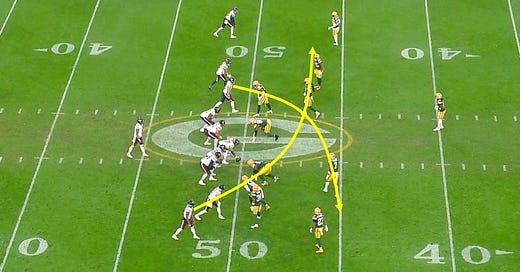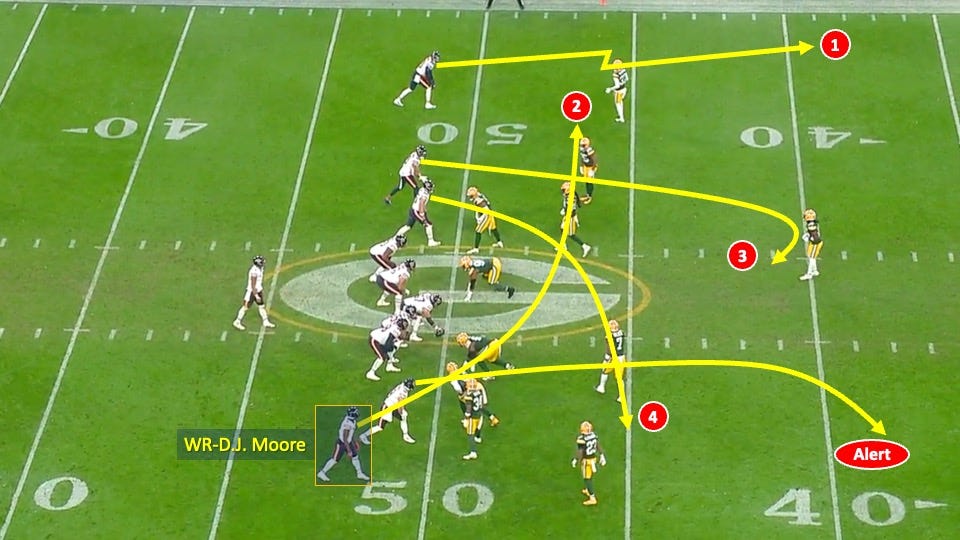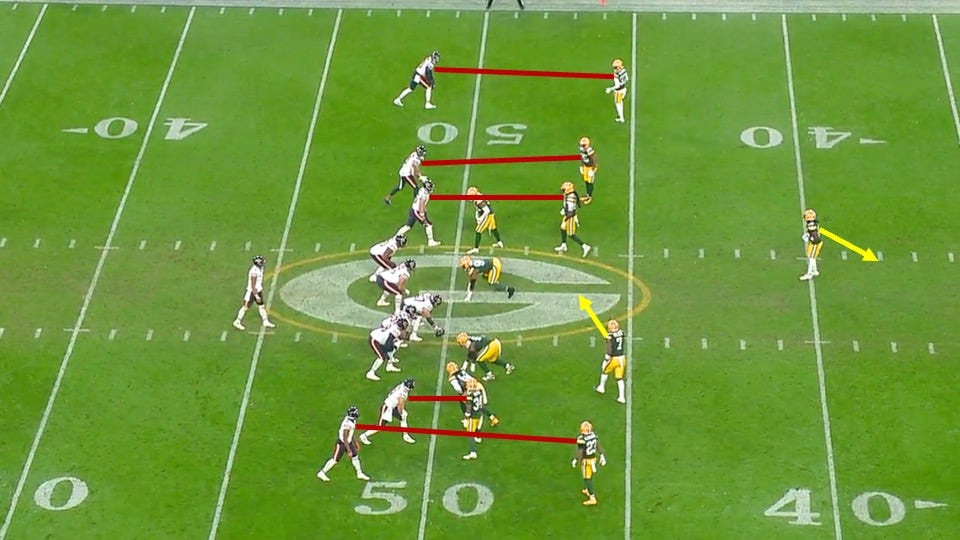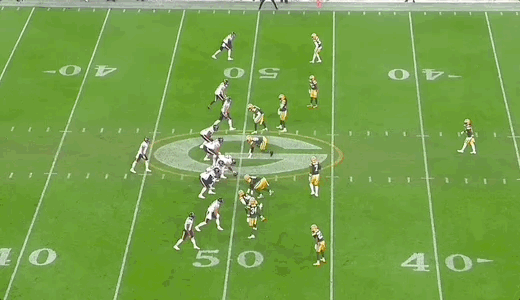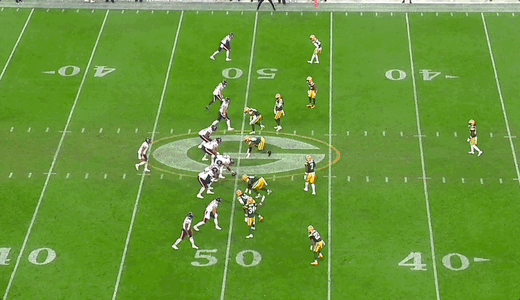“Mesh” is one of the best concepts for attacking man coverage. It creates traffic in the middle of the field, resulting in defenders getting picked, rubbed, or being forced to hesitate/divert their path. That leads to separation and yards after the catch.
Below, you can see the basic concept illustrated. The routes that define the play are two shallow crossers, generally run at 4-5 and 5-6 yards (although it can vary) from opposite sides of the field:
Against man coverage, the high crosser is meant to pick or rub or obstruct the path of of the shallow crosser’s defender. And that creates the separation.
The thing to point out is that mesh is generally part of a larger passing concept. It’s almost never the primary read. Instead, the first read is normally a route on the outside followed by the shallow crosser.
This first example came in a Week 18 game between the Bears and Packers during the 2023 season. Chicago faced a 3rd-and-4, a high-probability man-coverage situation.
Notice the overall play design with the quarterback’s reads. This is a fairly common way of running mesh in today’s NFL:
The primary read was a double move on the outside. The shallow crosser was the #2. If those first two receivers weren’t open, quarterback Justin Fields would keep moving across the field. There was also a built-in “alert” route in case the Bears got a specific coverage or Fields loved the matchup.
That alert route was also meant to provide traffic for the shallow crosser’s defender if he chased him across the field.
The Packers would play cover-1 here, which is a great look to run this play against:
In this instance, Green Bay tried to handle mesh by passing off D.J. Moore’s shallow crosser. Cornerback Jaire Alexander stopped following Moore once he released inside, leaving the low-hole defender (linebacker Quay Walker) to pick him up:
However, Walker got caught in the traffic of the crosser coming from the other side:
That’s mesh baby. Moore was easily able to separate.
Quarterback Justin Fields looked at the double move on the outside to his left first before coming down to Moore. The result here was a 33-yard gain:
Even if Walker hadn’t gotten stuck inside there, the Packers would have had a linebacker running with a receiver in man coverage, which still isn’t ideal even though he had leverage initially.
This next example came in a critical moment of Super Bowl LVIII. There were just 16 seconds left in the game and the Chiefs trailed the 49ers by 3. This was a 3rd-and-7.

